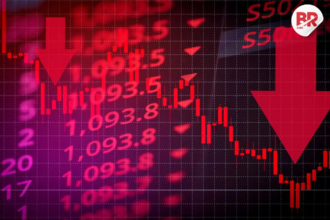
When it comes to predicting stock market trends, total monsoon rainfall isn’t the golden metric it’s made out to be. A deeper look shows July-August rains play a much bigger role in shaping market performance, especially in rural-sensitive sectors like FMCG and consumer durables.
In 2024, India received 8% more rainfall than the long-period average (LPA). Crop production rose by 5%. Yet, the Sensex only moved up by 1.2% between June and November. No clear monsoon-to-market magic there.

So, what gives?
Why Should the Average Investor Care?
Because for millions, rural spending power matters. Farmers are more likely to buy tractors, refrigerators, or fans after good sowing seasons. And those seasons hinge on July-August rains—not the entire monsoon.
That’s when most kharif sowing happens. If rainfall is well-timed and well-spread during these months, rural demand tends to stay strong. That lifts certain stocks, especially in sectors like consumer durables and FMCG.
Also Read Belrise Industries Shares Open Strong at ₹100: Buy, Sell or Just Hold Tight?
Rain, but Make It Smart
Here’s the twist: too much rain can hurt. Excessive rainfall—more than 10% above normal—can flood crops and dampen returns.
Take 2015. Rainfall in July and August was 19% below normal. Markets sank 4% between June and November. In 2018, weak rains again coincided with a 2.5% market drop.
But flip to 2010. Strong, evenly spread rainfall? Sensex jumped 14%.
So no, investors shouldn’t blindly celebrate the IMD’s prediction of a 6% above-average monsoon in 2025. What matters is whether the July-August rains fall right where and when they’re needed—especially in low-irrigation states like Rajasthan, MP, and Chhattisgarh.
Markets Don’t Swim in Averages
There’s an irony here. Every year, headlines hail “normal monsoon” as a win. But the market is more like a picky eater—it doesn’t care for the whole thali. It wants two good months served hot and evenly.
Experts agree. “Timing and spatial distribution are critical,” says Gaura Sengupta, Chief Economist at IDFC First Bank. July-August rains are the real deal-breaker.
What to Watch in 2025
This year, as monsoon forecasts roll in, investors should stop asking “how much rain?” and start asking “when and where?” July and August will decide not just farm yields, but your mutual fund smile (or frown).
Rains don’t guarantee returns. But ignore July-August rains, and you might miss the market’s main signal.
Also Read IMD Forecasts 108% Rainfall for June—But One Region Faces a Harsh Monsoon Surprise












